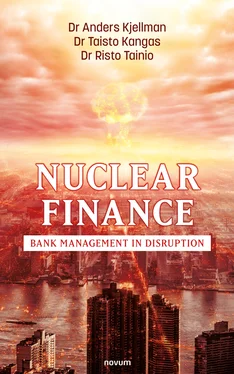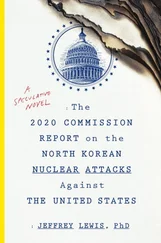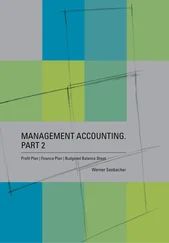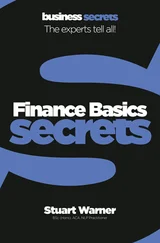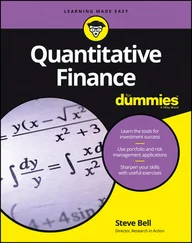The second lesson to learn is responsibility. You as a banker are responsible for other peoples’ money! You should act accordingly. A bank’s greatest assets are its own capital, its people and its customers. Make sure that the workforce feels that they have a meaningful job, and that the bank has sufficient funds of its own. That creates trust, which is a key success factor. Don’t get carried away when the growth markets are smoking hot. Growth, particularly in connection to a boom in the housing market, has historically led to some of the worst banking crises ever seen, for example the 1930s Great Depression and the Global Financial Crisis that started in 2008; and it is during crises that bank management is tested to its limits.
The third major lesson to learn is that you need to know and help your customers and team-mates to grow. Follow your customers fortunes and grow with them. You should act in both a supportive and a controlling way. Stress WHY your bank exists and how you can grow together in symbiosis. The issue of meaning or WHY a bank exists is particularly important.
The basic risks in banking are still the same as throughout history: lending at the right prices to good customers; and how the funding behind the lending is generated are important considerations for a bank. Therefore, a bank manager has to remember that their bank is both a borrower and a lender. Banking is about TRUST between lenders and borrowers.
The fourth major lesson is to recall the 5Ms. We were somewhat surprised to find that technology level and bank platform management were not considered as key for successful banking. Perhaps this is because banking is more of an issue of trust than technology. Instead, we found that, regardless of which sector of banking you are working in (credit, capital or casino-based banking), the 5Ms of banking are relevant. The great bankers prioritise:
1 Money: have sufficient own capital, i.e., 1/10 of the balance sheet.
2 Markets: know your market(s) and customers.
3 Meaning: make banking easier by building your bank on values, for example supporting the surrounding community.
4 Me: equals We.
5 Memories: part of the magic of ongoing banking.Be modest and honest!
Good bank and business management is also about luck!
If you would like to improve your chances of success, we argue that you will benefit from this book! Learning from others and from science is an art that is well worth pursuing!
In Chapters 6 and 7 we look at the future of banking! We will have a brief look at what is needed for the continued success of banks during the 2020’s and beyond. Disruptive innovations are transforming the platform economies, which banking has turned into. In our joint-bank platform project concerning disruptive innovations and the challenges that banking faces, Kjellman, Björkroth, Kangas, Tainio and Westerholm (2019) saw that one part of the dilemma lies in the uncertainty of an ‘untested’ technology. Another challenge was finding the real ‘source’ of disruption, as well as the choice of appropriate methods for dealing with such disruptions in the current context. The father of disruptive innovations, Clayton Christensen, stresses the complexity of disruptive innovation and we do not know where financial bubbles like Bitcoin and other cryptocurrencies will take us. However, we do know what it takes to survive!
Being a first mover is often not a good strategy when it comes to the traditional business of banking! What we found was that a first technology changing strategy is probably not a great strategy in a highly regulated and conservative market such as the banking industry. In fact, we were somewhat shocked that we didn’t find banking technology to be one of the crucial factors behind great bank performance; and we are still puzzled by that finding. Still globalization and regulative changes are forcing banks to act, due to technological advancements. How we pay for our purchases is one of the disruptions affecting banking. What we recommend is that you learn from the mistakes of others and build your banking on solid value management.
In this book we do not describe the details of financial instruments. However, you are unlikely to become an excellent bank manager if, for example, you don’t know how much you should pay for a bond, an option or a common stock, etc. Although we will not focus on the valuation of financial products, we will have a look at what factors caused the great financial crisis of the 1930s, as well as the crisis in the early 1990s, the Global Financial Crisis starting in 2008, and the coronavirus crisis emerging in 2020. We will try to make markets and banks in transition more understandable. We will open a few of the black boxes in banking, for example, by looking at the disruptive innovations and the challenges for banking in the twenty-first century. We will also examine what good banking practice is all about.
Bank success and failure depends on good and bad management. Undoubtedly the performance of a bank depends on individual bankers and their capabilities, judgements and moral values. This book is also a tribute to bank managers, who have stood the test of hard times for example bank manager Sven-Erik Kjellman’s eloquence, courage, and perseverance that bound a bank and the banking system together, when other banks, firms and institutions were failing.
2 - BANK MANAGEMENT IS CHANGING
Banks are important and can be seen as the veins and arteries wherein blood flows. Without them – life as we know it – is not possible. The banks are the first ones to get in shape, so our modern life can continue.
Noted in 1923 by J. K. Paasikivi (2000) former President of Finland and Bank Manager
Sure, banks are still tremendously important for economic growth!
We will start by highlighting some of the complexities that affect a bank manager’s work, as well as the entire financial intermediation and the banking industry. We will elucidate on what bank management is in practice and how banking has changed the bank actors’ cognitive views. We will try to investigate and identify the typical factors and patterns behind good (right) and bad (wrong) bank management. We refer to right here as meaning legitimate and wrong as in inappropriate. We will study what bank managers themselves think about bank management, and how bank management differs from management in a commercial or manufacturing firm.
Today, in a finance driven world, you may through your e-mail or social media, already have received tens of suspect loan offers from ‘new’ lending firms! Also buy-now-pay-later offers are frequent. For many this is the reality in our finance-driven world! Millions of customers have fallen for the temptation to try a fast loan, which in turn has often caused over indebtedness to increase, lost credit worthiness and increased personal problems!
Banks are special organisations, and both in banking business as well as in management there are “black boxes”. In the first black box there is debt creation, which will generate risk and uncertainty for bank managers. Or to put it another way: will the money be paid back? In the second “black box” there are the balance sheets, in which we can see the capital structure of a bank. And this balance sheet is about five to ten times more vulnerable than the typical capital structure of a manufacturing firm. We are thereby commencing on a journey to discover how bank management has changed with growing uncertainty and vulnerability in both traditional and shadow banking?
Already in the beginning of the twenty-first century, the banker Henry Kaufman (2000: 61) noted that the power and influence of traditional commercial banks, savings banks, cooperative banks, and insurance companies had diminished, while a new breed of institutional participants had come into force. The new breed included the often-reviled hedge funds, although they were neither the sole nor the leading contestants. We were at the beginning of the year 2000, during the peak of the internet or dot-com bubble, where wealth was being created and destroyed, sometimes overnight. The internet bubble that subsequently burst was an overoptimistic belief in information technology (IT), with internet and web solutions for sales, banking and almost all sorts of activities. It soon proved that all the promises made by the so-called dot-com companies were over-optimistic. In fact, most of the new dot-com companies had a hard time trying make a profit. However, “new” types of institutions had already been created in the financial markets during the 1990s, including hedge funds, investment banks, equity funds, etc.
Читать дальше
